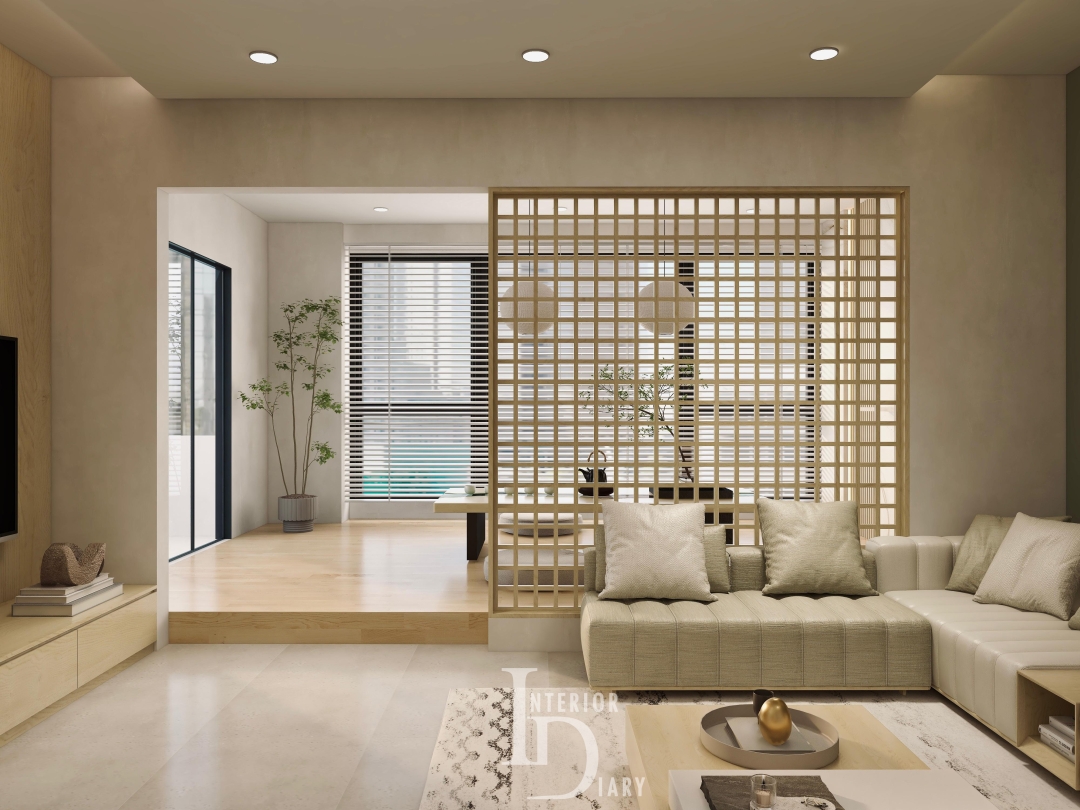In recent years, two design philosophies deeply rooted in Japanese aesthetics, Wabi-sabi and Japandi, have captured the hearts of Singaporean homeowners. Whether used alone or blended together, these styles offer a peaceful alternative to maximalism, one that’s becoming a hallmark of modern renovation trends across HDB flats and condominiums.
The Allure of Imperfection: Why Wabi-sabi Speaks to Singaporean Homeowners
At its core, Wabi-sabi invites us to “find beauty in imperfection, simplicity, and the natural cycle of life”. Rooted in Zen Buddhist ideals, this philosophy embraces organic materials, vintage patina, and subtle textures—values that resonate especially in Singapore’s urban landscape where clean and calming interiors are a welcome escape from city life. Unlike ultra-polished trends, Wabi-sabi celebrates the quirks and narratives that give a home emotional richness.
As Interior Diary Director Steven Loh articulates:
“We want to create spaces that not only look beautiful but also feel grounding and peaceful—where every element tells a story of craftsmanship and nature as well as the owner’s taste.” This sentiment lies at the heart of Wabi-sabi design principles.
Japandi: Minimalism Meets Warmth in a Perfect East–West Fusion
Derived from the names “Japanese” and “Scandinavian,” Japandi combines the minimalism of Japanese interiors with the cozy warmth of Scandinavian design. Essential elements, neutral color palettes, clean lines, and natural materials, give rise to interiors that feel calm, timeless, and functional.
Architectural Digest notes the trend’s increasing popularity in global design communities: “Japandi … merges Japanese traditional interior influences with contemporary design”. Even home renovation specialists see its appeal in Singapore perfectly reflecting compact living needs:
-
Makes small spaces feel open and airy
-
Encourages mindful living and clutter-free environments
-
Utilizes neutral tones to withstand the tropical climate
-
Incorporates sustainable, high-quality materials
“Japandi promotes calm and well-being,” adds Steven Loh, “transforming homes into restorative sanctuaries that align with lighter furniture and intentional layout planning.”
Why These Styles Work So Well in Singapore
-
Space Efficiency: With limited square footage, HDB flats and condos benefit from Japandi’s multipurpose furniture and Wabi-sabi’s celebration of restraint.
-
Natural Harmony: Materials like untreated wood, stone, and woven linens connect urban homes to a softer, natural aesthetic, rooted in both styles.
-
Identity & Story: Accent pieces like an antique ceramic bowl or handmade pottery allow personal storytelling—core to both Wabi-sabi and Japandi’s philosophies.
Interior Diary’s Approach: Design That Resonates and Lasts
At the intersection of these trends lies Interior Diary’s design ethos:
“The difference between interior designers and contractors is that we focus on balancing aesthetics, functionality and space planning to meet the homeowner’s needs … making the renovation process smoother and worry-free for the client.” —Steven Loh
Projects reflect this dedication:
-
Wabi-sabi interiors filled with weathered wood, earthen ceramics, and soft textures bring character and serenity to home spaces.
-
Japandi layouts employ thoughtful neutral palettes, ambient lighting, and nature-inspired decor to amplify calm and openness.
Crafting Your Own Japan-Inspired Sanctuary
Whether renovating your HDB flat or condo, here are actionable design steps:
-
Select neutral earthy tones as your base, creams, muted greens, soft beiges.
-
Prioritize simple, high-quality furniture, think low-profile sofas or reclaimed-wood tables.
-
Incorporate imperfect, handcrafted elements, for texture and soul.
-
Adopt multi-functional furniture, like storage benches or nesting tables to maximize utility.
-
Let natural light be your muse, and introduce layered lighting for evening warmth.
The Road Ahead: Building Tranquil, Thoughtful Spaces
As interiors in Singapore evolve, Japan-inspired styles like Wabi-sabi and Japandi offer a balanced response to both aesthetic and emotional needs, inviting calm, mindfulness, and authenticity into daily life.
Interior Diary is proud to guide homeowners on this journey: blending philosophy with modernity to craft homes that are not only beautiful but also deeply meaningful.
Discover more about Wabi-sabi and Japandi design styles at Interior Diary: https://www.interiordiary.com.sg/wabi-sabi-interior-design/
Media Contact
Company Name: Interior Diary Pte Ltd
Contact Person: Christopher Puan
Email: Send Email
Phone: 6596994264
Address:116 Lavender Street, #01-04 Pek Chuan Building
City: Singapore 338730
Country: Singapore
Website: https://www.interiordiary.com.sg/

